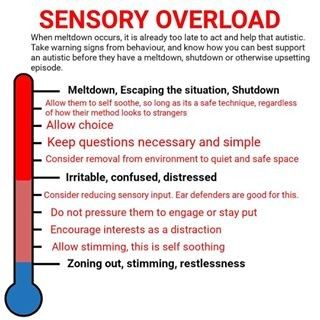
Sensory overload can significantly impact individuals with special needs, making zoo visits challenging. This thorough guide offers practical strategies for navigating sensory overload and meltdowns during zoo visits. It delves into understanding triggers, effective coping mechanisms, and essential planning tips for a positive and enjoyable experience for everyone involved. We’ll look at strategies for managing meltdowns, building resilience, and creating an inclusive environment. This guide will offer a framework to manage potential stressful situations for everyone, ensuring that the visit is a positive and empowering experience. This article is structured into sections on understanding triggers, developing coping mechanisms, environmental modifications, and preparing for potential meltdowns. Planning ahead and creating a supportive atmosphere can make a significant difference.
Understanding Sensory Overload Triggers
determineing Sensory Overload in Special Needs Individuals
Sensory overload, a common experience for individuals with special needs, occurs when the senses are bombarded with excessive stimulation, leading to overwhelming feelings and behaviors. Recognizing the specific sensory triggers can significantly aid in developing effective coping strategies. A child who experiences sensory overload may display behavioral changes such as boostd anxiety, agitation, or withdrawal. Understanding sensory overload triggers is crucial for managing potential meltdowns in a zoo environment. A crowded environment, loud noises, bright lights, and unfamiliar sights can overwhelm an individual’s senses, triggering a sensory overload response. For instance, a child with autism might be overwhelmed by the close proximity of numerous people or the loud sounds of the zoo’s animal enclosures. These situations can lead to meltdowns or other behaviors that interfere with the visit.
Developing Effective Coping Mechanisms
Implementing Sensory-Friendly Strategies
Developing coping strategies for sensory overload is crucial for creating a positive and manageable zoo experience. Sensory-friendly strategies include providing opportunities for sensory regulation, such as access to quiet spaces, fidget toys, or weighted blankets. Families can discuss potential sensory challenges with the child beforehand and incorporate their preferences into the visit plan. These strategies help to prevent or mitigate the intensity of a sensory overload episode. For instance, providing earplugs or noise-canceling headphones can help reduce the auditory stimulation during the visit. Similarly, sunglasses can help reduce visual overload. In some cases, a quiet space within the zoo might be an crucial part of the plan to mitigate sensory triggers.
Environmental Modifications
Creating a Supportive Zoo Environment
Creating a supportive zoo environment involves considering the sensory needs of the individual with special needs. Before the visit, it’s wise to study the zoo’s layout and facilities to plan for possible stressors. determineing areas with high noise levels or intense visual stimuli is crucial. Many zoos now offer sensory-friendly hours or quiet areas, which might be beneficial for individuals with heightened sensitivities. For instance, some zoos allow pre-visits to allow for familiarization with the environment and reduce anxieties associated with the unknown. Advance planning can make a big difference by enabling families to anticipate challenges. Communication with zoo staff about specific accommodations beforehand is often a valuable tool for minimizing meltdowns.
Preparing for Potential Meltdowns
Developing a Crisis Management Plan
Developing a crisis management plan is crucial for navigating potential meltdowns. A plan should include pre-visit discussions and strategies to address the child’s needs. Pre-visit practice scenarios, and establishing a safe space within the zoo can be very beneficial for an individual who may experience difficulty. Creating a pre-determined exit plan, and discussing possible escape routes, can greatly reduce stress levels. Having a designated calm-down space for the child—perhaps in a quiet corner or an enclosed area—can facilitate self-regulation and reduce the intensity of the meltdown. Families can work with the zoo to determine these spaces. The key to achievementful meltdown management lies in anticipating potential triggers and having pre-prepared solutions.
Building Resilience and Fostering Positive Experiences
Enhancing Emotional Regulation
Building resilience is an crucial part of ensuring a positive zoo experience. This involves recognizing triggers, promoting relaxation techniques, and practicing positive self-talk. For example, children might practice breathing exercises or engage in quiet activities like coloring or listening to calming music to help manage overwhelming feelings. Promoting communication with the child is key for ensuring a positive experience. A positive approach fosters an inclusive environment. Regularly discussing the experiences can help the child feel more in control and empowered. Enhancing self-awareness and emotional regulation are key to creating a lasting positive experience.
In conclusion, managing sensory overload during zoo visits with special needs individuals requires proactive planning, understanding triggers, and implementing coping mechanisms. By preparing in advance, creating a supportive environment, and fostering communication, families can navigate these challenges effectively. Remember, patience, flexibility, and open communication are key. For further support and resources, consult with therapists, special education professionals, or organizations dedicated to assisting individuals with special needs. Visit our website for more articles and tips on navigating sensory overload situations.